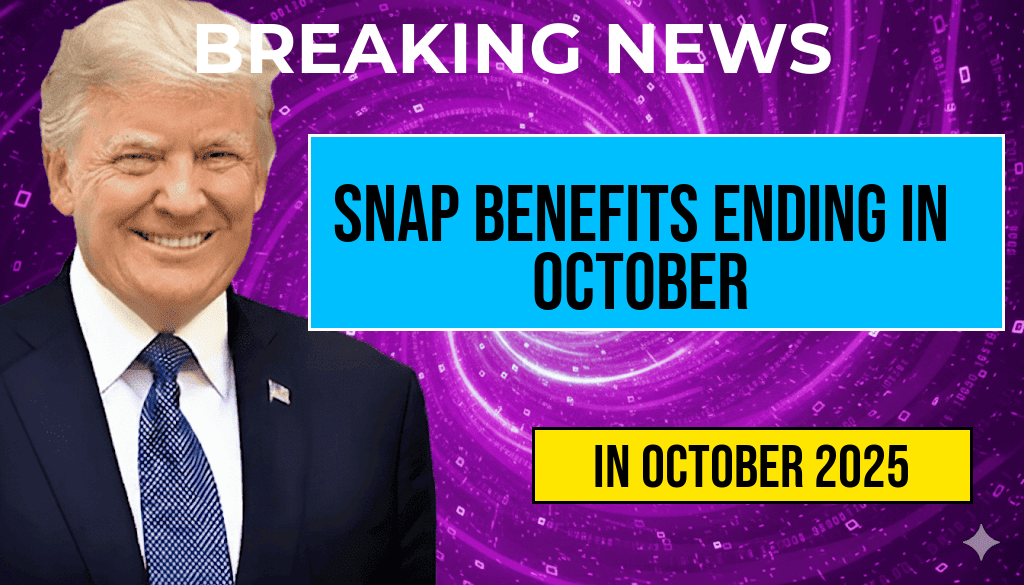Starting October, the Supplemental Nutrition Assistance Program (SNAP)—commonly known as food stamps—will undergo a significant overhaul that will eliminate benefits for millions of recipients nationwide. The federal government announced that the current pandemic-era flexibilities, which temporarily increased monthly benefits, will end, reverting to pre-pandemic standards. This change is expected to impact approximately 20 million households, many of whom rely heavily on SNAP for their daily nutritional needs. The move has sparked widespread concern among advocacy groups, policymakers, and recipients, who warn it could deepen food insecurity amid ongoing economic challenges. The decision comes amid broader discussions about federal budget priorities and the long-term sustainability of social safety net programs.
Details of the October SNAP Overhaul
Background on Pandemic-Era Enhancements
During the COVID-19 pandemic, federal authorities temporarily expanded SNAP benefits through emergency allotments and increased monthly allotments based on household size. These measures aimed to address the economic strain faced by millions due to job losses and health crises. According to the U.S. Department of Agriculture (USDA), these enhancements provided an average increase of $95 per household per month, significantly easing food insecurity for many Americans.
The End of Temporary Benefits
As part of the scheduled policy rollback, the increase in benefits will cease, and recipients will revert to standard pre-pandemic benefit levels. The USDA estimates that the average monthly benefit will decrease by about 30%, affecting those who previously received supplemental aid. The change is set to take effect on October 1, 2023, and is expected to influence household budgets across all states.
Impacted Populations and Regional Variations
While the federal policy applies nationwide, the impact will vary regionally due to differences in living costs and state-level administration. Urban areas with higher living expenses, such as New York City and Los Angeles, may see more pronounced effects on recipients’ ability to purchase nutritious food. Conversely, states with lower costs of living may experience less severe reductions.
Reactions from Stakeholders
Advocates for Food Security
- Food banks and advocacy groups warn that the benefit reductions could lead to increased hunger, especially among low-income families, seniors, and children. They argue that the timing is particularly concerning given ongoing inflation and rising food prices.
- Numerous organizations, including the Feeding America, have called for policy reconsideration or additional support measures to mitigate the impact.
Government Perspectives
- The Biden administration emphasizes that the rollback aligns with legislative mandates and fiscal responsibility goals. Officials argue that the pre-pandemic benefit levels are sufficient for most recipients and that the economy has sufficiently recovered to handle the transition.
- Despite these assurances, critics contend that the timing ignores the persistent economic hardships faced by many Americans, especially as inflation remains elevated compared to pre-pandemic levels.
Potential Consequences and Policy Implications
Food Insecurity Risks
| Aspect | Potential Effect |
|---|---|
| Household Food Access | Increased difficulty affording nutritious meals |
| Child Nutrition | Possible rise in child hunger and developmental concerns |
| Local Economies | Reduced spending in grocery stores and food markets |
Broader Policy Debates
The upcoming changes have intensified debates over the role of federal welfare programs in economic stability. Critics argue that reducing benefits during a period of economic uncertainty could exacerbate inequalities and strain local social services. Conversely, proponents contend that the adjustments are necessary to ensure the program’s long-term fiscal health and prevent dependency.
Looking Ahead
As policymakers evaluate future support strategies, some have proposed targeted measures to cushion vulnerable populations. These include increased funding for food banks, job training programs, and state-level initiatives to address food insecurity. Meanwhile, recipients are urged to explore additional assistance options and community resources.
For more information on SNAP and recent policy changes, visit the USDA SNAP page or consult local social service agencies for guidance.
Frequently Asked Questions
Question
What is the main reason for the elimination of SNAP benefits in October?
Question
How will the October overhaul impact current SNAP recipients?
Question
Are there any alternative assistance programs available for those losing SNAP benefits?
Question
What criteria determine eligibility for SNAP benefits after the October changes?
Question
When will the new SNAP policy officially take effect, and how can recipients prepare?






